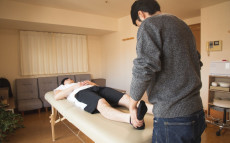- pathfindersAI
- Job Profile
Athletic Trainers
Summary
Athletic Trainers: Guardians of Athlete Health
What They Do
Athletic Trainers (ATs) are integral members of the sports medicine team, dedicated to the prevention, diagnosis, treatment, and rehabilitation of sports-related injuries and conditions. Their pivotal role straddles the line between healthcare and athletics, ensuring that athletes—from weekend warriors to professional competitors—stay at peak performance while minimizing the risk of injuries. Whether on the sidelines of a high-impact football game or in the controlled environment of a rehabilitation facility, ATs are always on the frontline, ready to administer immediate care and develop tailored conditioning programs.
Job Responsibilities
The responsibilities of athletic trainers are multifaceted and dynamic, encompassing a vast spectrum of tasks vital for athlete health and safety. They conduct comprehensive assessment of athletes' physical conditions through diagnostic tests to establish individual baselines. In the event of an injury, ATs provide immediate response and care, implementing first aid and emergency procedures to minimize damage and facilitate rapid recovery. Additionally, they design and oversee rehabilitation programs, ensuring personalized and effective recovery processes. Athletic Trainers also play a proactive role, devising injury prevention programs and counseling athletes on lifestyle choices that influence performance and health. Collaborating closely with physicians, physical therapists, and coaches, they ensure a cohesive approach to athlete care.
Essential Skills
The role of an athletic trainer demands a blend of precise technical skills and compassionate interpersonal abilities. Proficient knowledge of human anatomy, injury pathology, and kinesiology is essential to accurately assess and treat injuries. Practical expertise in therapeutic techniques and first aid is crucial for effective on-field and clinical applications. Moreover, strong communication skills enable ATs to convey complex medical information clearly to athletes, coaches, and healthcare professionals alike. The capacity for quick decision-making and critical thinking are invaluable, particularly in high-pressure situations requiring immediate action. Lastly, empathy and a patient-centered approach provide the necessary support network for athletes navigating the physical and emotional challenges of injury and recovery.
Educational Pathways
Becoming an athletic trainer necessitates a structured educational pathway, often beginning with a Bachelor’s degree in Athletic Training or a related field. This foundation typically encompasses coursework in biology, anatomy, physiology, nutrition, and sports psychology, paired with hands-on clinical experience under the guidance of certified professionals. Following undergraduate studies, aspiring ATs must earn a Master’s degree in Athletic Training, mandated by the Commission on Accreditation of Athletic Training Education (CAATE). This advanced education delves deeper into clinical proficiency, advanced therapeutic interventions, and in-depth research projects. State licensure or certification through the Board of Certification for the Athletic Trainer (BOC) is mandatory, involving rigorous examination to ensure competence and adherence to professional standards. Continuing education remains a pivotal aspect of maintaining certification and staying abreast of evolving practices in sports medicine.
Career Prospects
The career prospects for athletic trainers are promising, driven by an increasing emphasis on preventive care and injury management across both amateur and professional sports domains. Employment opportunities span various settings including secondary schools, colleges, universities, professional sports teams, healthcare facilities, and military academies. While new graduates might start in generalist roles, experienced ATs can progress to specialized positions such as rehabilitation coordinators, clinical managers, or research specialists. Additionally, a background in athletic training can serve as a springboard into related fields such as physical therapy, sports medicine, or orthopedic consulting. The job market for ATs is buoyed by a growing societal focus on health, wellness, and the benefits of physical activity.
Conclusion
Athletic trainers play a critical and multifaceted role in the landscape of sports and healthcare. Their dedication to the prevention, assessment, treatment, and rehabilitation of sports-related injuries ensures that athletes can perform at their best while minimizing the risk of injury. Through rigorous education and essential skill development, athletic trainers are equipped to meet the diverse challenges of this dynamic profession. As the demand for personalized and preventive care continues to rise, so too do the career opportunities within this field. By merging expertise with compassion, athletic trainers safeguard the health and longevity of athletes across all levels of competition.
Video
Compensation
| State | Median Salary | Median Hourly | Positions |
|---|---|---|---|
| AZ | 61,520 | * | 690 |
| AL | 51,600 | * | 370 |
| AK | 74,570 | * | 60 |
| CA | 72,370 | * | 1,760 |
| CO | 60,120 | * | 480 |
| CT | 61,240 | * | 390 |
| DE | 53,840 | * | 110 |
| DC | 69,940 | * | 120 |
| FL | 55,210 | * | 1,410 |
| GA | 59,400 | * | 1,400 |
| HI | 68,240 | * | 170 |
| ID | 60,110 | * | 100 |
| IL | 61,110 | * | 1,000 |
| IN | 52,650 | * | 760 |
| IA | 49,230 | * | 270 |
| KS | 52,600 | * | 390 |
| KY | 49,490 | * | 560 |
| LA | 52,260 | * | 310 |
| ME | 56,430 | * | 190 |
| MD | 58,490 | * | 240 |
| MA | 61,850 | * | 610 |
| MI | 53,820 | * | 770 |
| MN | 60,620 | * | 1,310 |
| MS | 51,100 | * | 300 |
| MO | 49,750 | * | 410 |
| MT | 48,960 | * | 40 |
| NE | 55,630 | * | 260 |
| NV | 50,100 | * | 150 |
| NH | 54,000 | * | 130 |
| NJ | 71,480 | * | 600 |
| NM | 63,770 | * | 80 |
| NY | 62,300 | * | 960 |
| NC | 50,750 | * | 1,110 |
| ND | 53,990 | * | 100 |
| OH | 57,780 | * | 1,750 |
| OK | 59,940 | * | 330 |
| OR | 60,870 | * | 170 |
| PA | 54,590 | * | 2,310 |
| RI | 60,110 | * | 70 |
| SC | 56,220 | * | 440 |
| SD | 50,600 | * | 150 |
| TN | 54,010 | * | 570 |
| TX | 61,260 | * | 2,430 |
| UT | 59,480 | * | 310 |
| VT | 56,920 | * | 130 |
| VA | 58,910 | * | 660 |
| WA | 56,160 | * | 440 |
| WV | 44,450 | * | 180 |
| WI | 61,730 | * | 700 |
| WY | 49,330 | * | 60 |
| AR | 48,810 | * | 180 |
Similar Occupations
In this area you will find other occupations that are close to the one you were viewing in tasks, knowledge and work environment. If the primary job profile you are viewing isn't quite to your liking, take a look around and see what else is available.
Basic and Premium Accounts have more alternative occupations available than the Free account.

Chiropractors - 29-1011.00
A chiropractor is a healthcare professional who diagnoses and treats neuromuscular disorders by manually adjusting or manipulating the spine. They aim to alleviate pain, improve functionality, and support the body’s natural ability to heal itself, often incorporating exercise and nutritional advice into treatment plans.
-
$76,530/yr
Median Pay -
41,480
Number of Jobs

Coaches and Scouts - 27-2022.00
Coaches and Scouts evaluate athletic talent and strategize game plans to improve individual and team performance. They identify and recruit promising athletes, providing guidance and training to help them reach their full potential.
-
$45,910/yr
Median Pay -
238,980
Number of Jobs